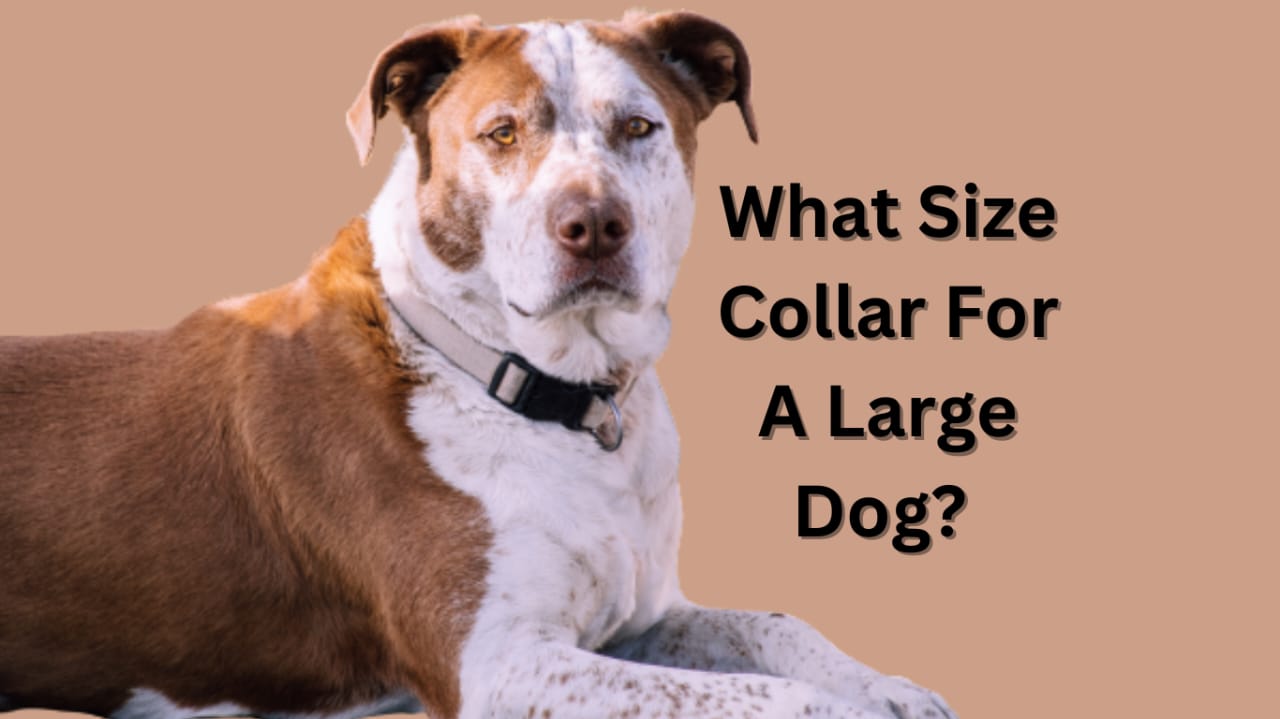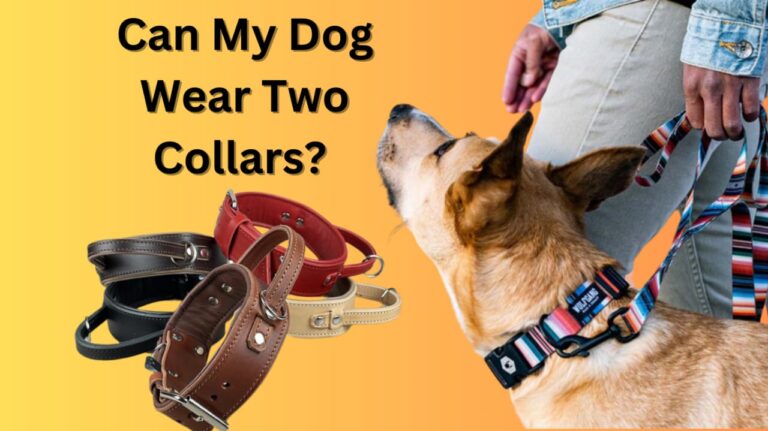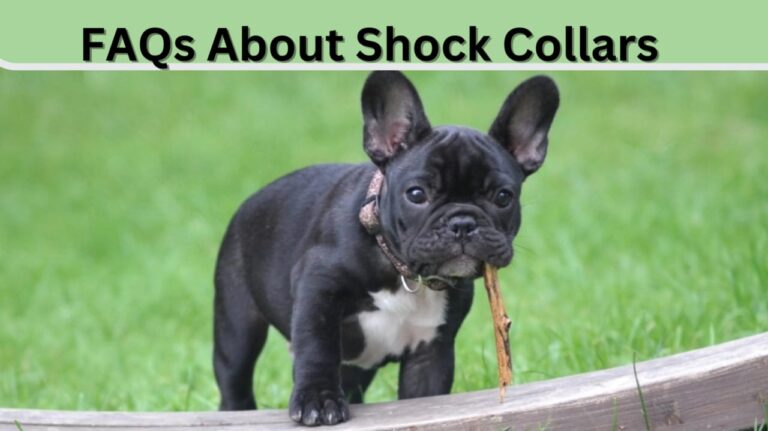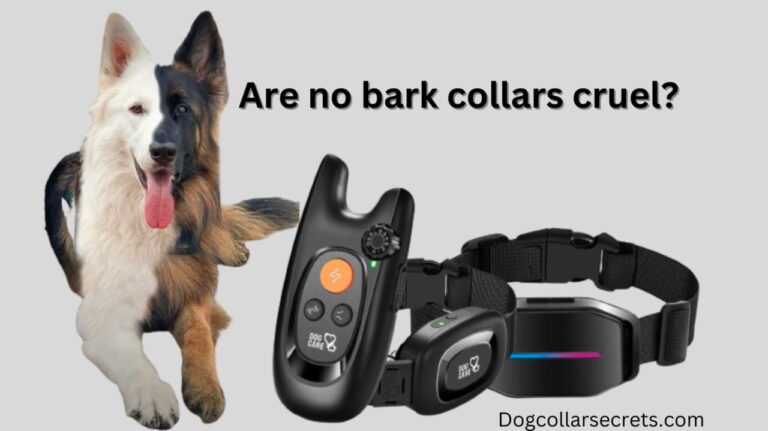Large Dog Collar Size: What size collar for a large dog?

What size collar for a large dog?
Wondering, “What size collar for a large dog?” The answer lies in finding the perfect fit for your furry friend’s comfort and safety. For large dogs, collar sizes typically range from 18 to 22 inches (46 to 56 cm). A well-fitted collar ensures their well-being. In this comprehensive guide, we’ll explore large dog collar sizing, providing step-by-step instructions, essential considerations, and expert advice.
What size collar for a large dog? A Comprehensive Guide
Understanding the significance of the right collar size for your large dog is crucial. A collar that’s too tight can cause discomfort, restrict your dog’s breathing, or even lead to injury. On the other hand, a collar that’s too loose poses the risk of slipping off during walks or outdoor adventures, potentially putting your pet in danger.
Large Dog Collar Size: For large dogs, collar sizes typically range from 18 to 22 inches (46 to 56 cm). This is a key reference point when determining the appropriate collar size for your furry companion.
To find the ideal collar size, consider the specific needs of your large dog. Different breeds and individual dogs may require slightly different collar sizes, so measuring their neck accurately is paramount. By following our step-by-step instructions and taking into account factors such as breed, age, and weight, you’ll be equipped to choose a collar that offers both comfort and security for your beloved canine companion.
How Do I Know My Dog’s Collar Size?
Determining your large dog’s collar size accurately is the first step in ensuring their comfort. Here’s a detailed process:
- Gather Your Supplies: Before you begin, gather the necessary supplies. You’ll need a flexible measuring tape, a pen or pencil, and a piece of paper.
- Measure Your Dog’s Neck: Locate the area where the collar will sit, which is typically just below the jawline. Wrap the measuring tape snugly around this part of your dog’s neck. Ensure that it’s neither too tight nor too loose. Take note of the measurement in both inches and centimeters.
- Consider Your Dog’s Breed: Different dog breeds have different neck sizes, so it’s crucial to consider breed-specific variations when determining collar size. For example, a Great Dane will require a larger collar than a Labrador Retriever.
- Factor in Weight and Age: Keep in mind that your dog’s weight and age can also influence their collar size. Puppies will grow into larger collars, so consider an adjustable collar for them.
How Tight Should a Dog Collar Be?
The fit of your dog’s collar is critical for their safety and comfort. Here are some essential points to keep in mind:
- The Two-Finger Rule: A properly fitted collar should allow you to insert two fingers comfortably between the collar and your dog’s neck. This ensures that it’s snug enough to stay in place but not too tight to cause discomfort or choking.
- Check for Slippage: Make sure the collar doesn’t slip over your dog’s head when they pull on the leash. If it does, it’s too loose and should be adjusted for a better fit.
How Do I Choose a Dog Collar?
Selecting the right collar for your large dog involves considering various factors:
Material:
Collars are available in a variety of materials, including nylon, leather, and fabric. The choice of material plays a crucial role in your dog’s comfort and your lifestyle. Here’s a closer look at each material:
Nylon: Nylon collars are popular due to their durability and affordability. They are also easy to clean, making them a practical choice for dogs that enjoy outdoor adventures.
Leather: Leather collars are known for their elegance and strength. While they require more maintenance to keep them in top condition, they tend to become more comfortable over time as they soften with use.
Fabric: Fabric collars offer a wide range of designs and patterns, allowing for personalization and style. However, they may not be as sturdy as nylon or leather, so they are best suited for dogs with a mild disposition.
Collar Type:
Choosing the right collar type depends on your dog’s needs and specific situations. Here are some common collar types and their purposes:
Buckle Collars: These are the standard choice for everyday walking and activities. They feature a secure buckle that keeps the collar in place. They are widely used and provide a reliable option for most dogs.
Martingale Collars: Ideal for dogs with narrower heads like Greyhounds and Whippets, martingale collars prevent these breeds from slipping out of their collars. They offer a balance between security and comfort.
Slip-On Collars (Choke Collars): It’s essential to exercise caution with slip-on collars, also known as choke collars. They should be used under the guidance of a professional dog trainer, as improper use can cause harm to your dog. They are primarily used for training purposes and not recommended for everyday use.
Width:
The width of the collar is an important consideration, especially for large dogs. Here’s why it matters:
Wider collars distribute pressure more evenly across your dog’s neck. This reduces the risk of injury or discomfort during walks or training sessions, especially if your large dog tends to pull on the leash. A wider collar provides added stability and control.
Reflective or LED Collars:
If you often walk your dog in low-light conditions or at night, consider a collar with reflective strips or LED lights. These collars enhance visibility, making your dog more visible to vehicles and pedestrians, increasing safety during evening outings. Reflective collars use light from external sources, such as streetlights or car headlights, to make your dog more noticeable, while LED collars emit their light, providing added visibility.
Each of these factors contributes to your dog’s comfort, safety, and overall enjoyment of wearing a collar. When selecting a collar, consider your dog’s specific needs, your lifestyle, and the activities you both enjoy to make an informed choice that enhances your dog’s well-being.
How Many Fingers Should Fit Under a Dog Collar?
The “two-finger rule” is a practical guideline to ensure a proper fit:
To check the tightness of your dog’s collar, use the “two-finger rule.” Simply slide two fingers under your dog’s collar. If they fit snugly between the collar and your dog’s neck, it’s properly adjusted—neither too tight nor too loose. However, if you can easily slide more than two fingers, it indicates that the collar is too loose and should be tightened for a secure fit. This simple yet effective method ensures that your dog’s collar is comfortable and safe during all activities, from walks to playtime.
What Is the Two-Finger Rule for Collars?
The two-finger rule is a crucial guideline for ensuring your dog’s collar fits comfortably and safely. It’s all about allowing just enough room for your two fingers to fit comfortably under the collar. This prevents choking or discomfort and ensures proper breathing and movement. It’s a simple but effective way to guarantee your dog’s well-being during various activities.
Dog Collar Sizing Chart
A dog collar sizing chart is a valuable reference tool, especially if you’re unsure about your dog’s measurements. These charts typically provide a range of neck sizes in inches and centimeters for different breeds and weights. Here’s a general guideline for collar sizes based on dog weight:
Certainly, here’s the dog collar sizing chart presented in a table format for easy reference:
| Size | Inches Range | Centimeters Range |
|---|---|---|
| XS (Extra Small) | 6 to 10 inches | 15 to 25 cm |
| S (Small) | 10 to 14 inches | 25 to 36 cm |
| M (Medium) | 12 to 16 inches | 36 to 46 cm |
| ML (Medium-Large) | 16 to 20 inches | 41 to 51 cm |
| L (Large) | 18 to 22 inches | 46 to 56 cm |
| XL (Extra Large) | 22 to 26 inches | 56 to 66 cm |
Please keep in mind that these measurements are approximate, and actual collar sizes may vary slightly depending on the manufacturer. Always measure your dog’s neck for the most accurate sizing, especially if you have a breed that falls in between sizes.
Collar Sizes for Common Large Dog Breeds
| Breed | Collar Size Range (Inches) |
|---|---|
| Labrador Retriever | 18 – 24 |
| German Shepherd | 20 – 26 |
| Golden Retriever | 18 – 24 |
| Boxer | 18 – 24 |
| Great Dane | 22 – 30 |
| Rottweiler | 20 – 26 |
| Siberian Husky | 18 – 24 |
| Doberman Pinscher | 18 – 24 |
| Bernese Mountain Dog | 22 – 28 |
| Newfoundland | 24 – 32 |
| Saint Bernard | 26 – 36 |
| Bullmastiff | 24 – 30 |
| Mastiff | 28 – 36 |
| Rhodesian Ridgeback | 18 – 24 |
| Akita | 20 – 28 |
| Irish Wolfhound | 28 – 32 |
| Leonberger | 24 – 32 |
| Bloodhound | 24 – 30 |
| Neapolitan Mastiff | 26 – 36 |
| Scottish Deerhound | 26 – 32 |
| Siberian Husky | 18 – 24 |
Remember, these sizes are approximate and can vary based on individual dogs and specific manufacturers’ collar sizing. It’s essential to measure your dog’s neck for the most accurate fit, especially if you have a less common or mixed breed dog
Conclusion:
In conclusion, “What size collar for a large dog?” is a vital question for responsible pet owners. Collar sizes typically range from 18 to 22 inches (46 to 56 cm) for large dogs, ensuring both comfort and security. Measuring your dog’s neck accurately and considering factors like breed, age, and weight are essential steps. A well-fitted collar is more than an accessory; it’s a commitment to your dog’s well-being, allowing them to enjoy every moment with comfort and safety.
.
This may also be helpful for you: What Size Is A Medium Collar In Inches?
How Long Can You Leave A Bark Collar On A Dog?




